In the heart of Nicosia, at Büyük Han, the great Ottoman caravanserai and one of the most beautiful buildings in Cyprus, the Coffee Club meets every Saturday. Men and women carry tables to the large courtyard, set up chairs and joke with each other. So far, so normal.
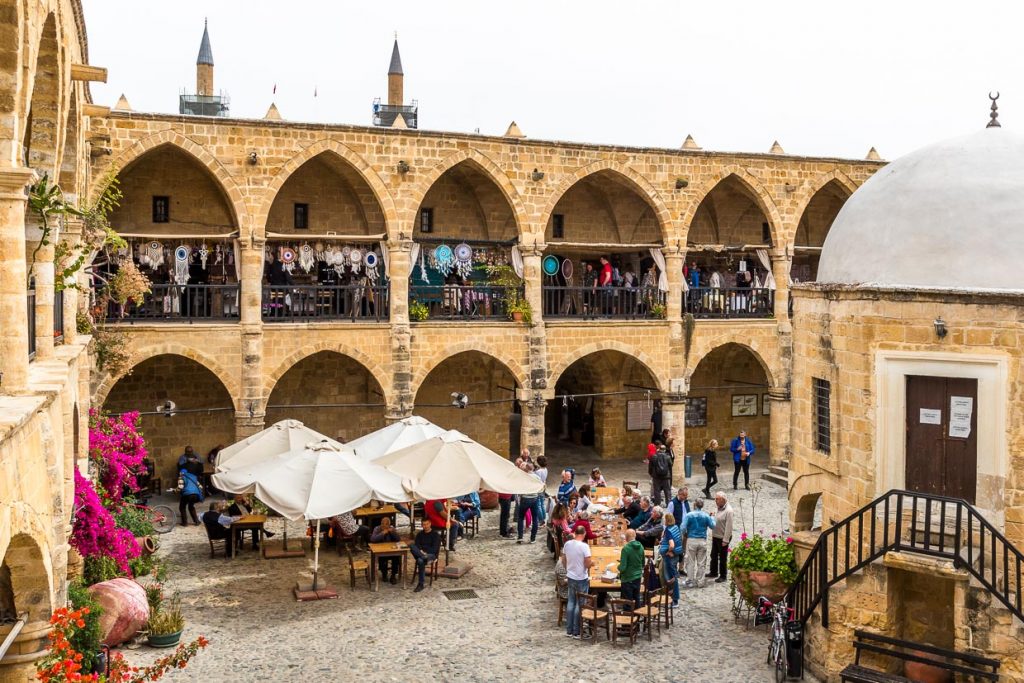
But some in the group, like Marina and Andreas, have just passed a checkpoint, presented their ID, which is first scanned by the Greek-Cypriot border guards, and not a hundred meters away the same thing happens at the Turkish-Cypriot checkpoint. Nicosia is the only capital in the world that is still divided. In 1964, the British Major General Peter Young drew the Green Line on a map right through the winding streets of the old town in order to pacify the civil war. Streets became dead ends, with barbed wire barricades at the end. In 1974, after Turkey’s military intervention, this buffer zone was expanded and has since been monitored by the UN.

20 years of Coffee Club
Hope was raised in 2003 when the right-wing President Rauf Denktash of the Turkish Republic of Northern Cyprus, which is only recognized by Ankara, opened the barriers at the Ledra Palace in Nicosia. Curiously, people from Turkish Northern Cyprus streamed into the Greek part of Nicosia and vice versa at that time. The Coffee Club was also founded in that year. 2004 became the year of destiny. While the people in the north of Cyprus wanted to finally free themselves from economic isolation, fears were stirred up in the south of the island that reunification would be tantamount to the loss of Greek identity. The UN peace plan for Cyprus failed because of the clear “no” of the Greek Cypriots. For the Coffee Club, which had just been founded, this was a bitter disappointment. They continue to meet at Büyük Han to this day.
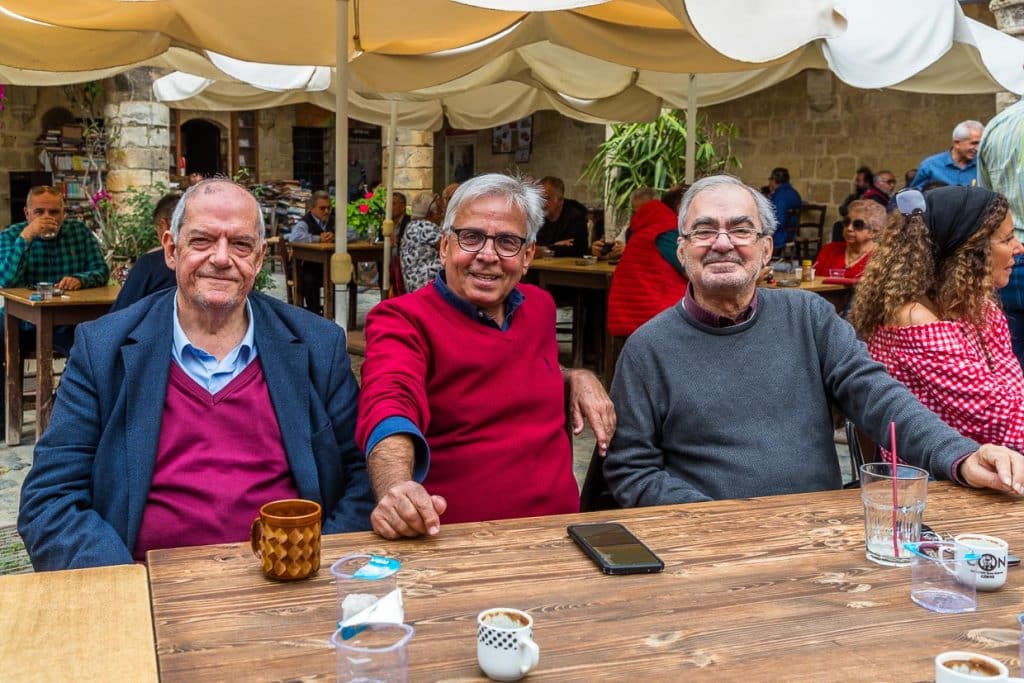
With gallows humor and self-irony
The Büyük Han Coffee Club is the only bi-communal group interested in the reunification of Cyprus. That is why Andreas, Hasan, Nikolaos, Hasip, Süleyman, Marina, Halil and many others meet. They bring friends and acquaintances, invite politicians and representatives to get to know the people and life on the other side of the island.
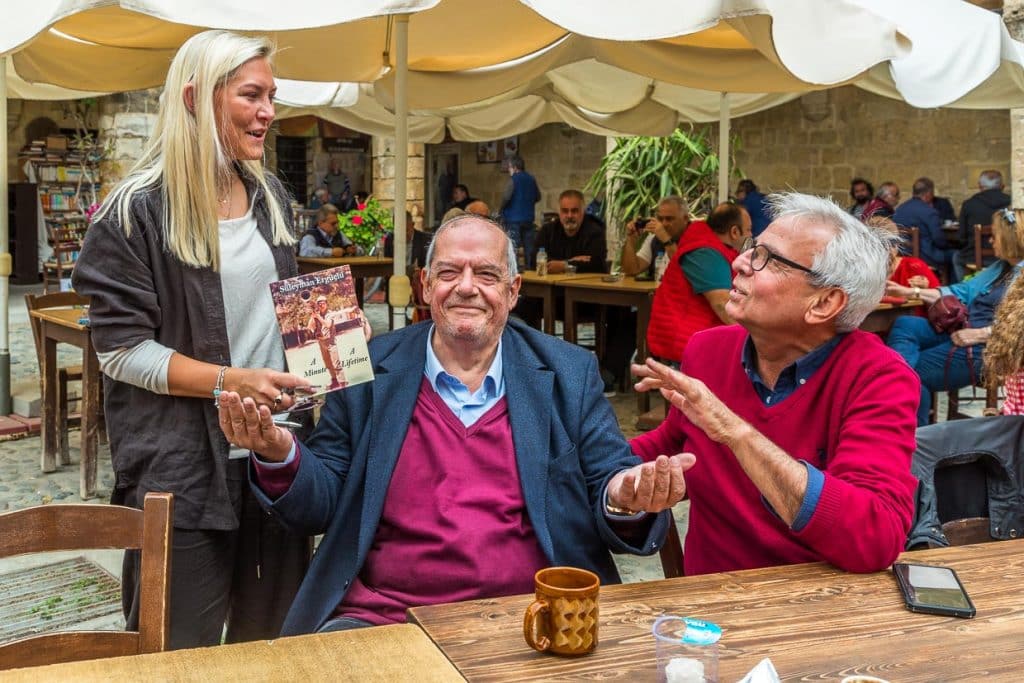
There is a lot of talk, but little about politics. The conflict, known worldwide as the Cyprus problem, dominates the media on both sides of the island. That’s why the Coffee Club has set itself a few rules. One of them is: no long political discussions. Politicians such as the two mayors of the divided city, UN staff, and current and former chief negotiators of the peace talks keep dropping in at the emphatically informal meeting.
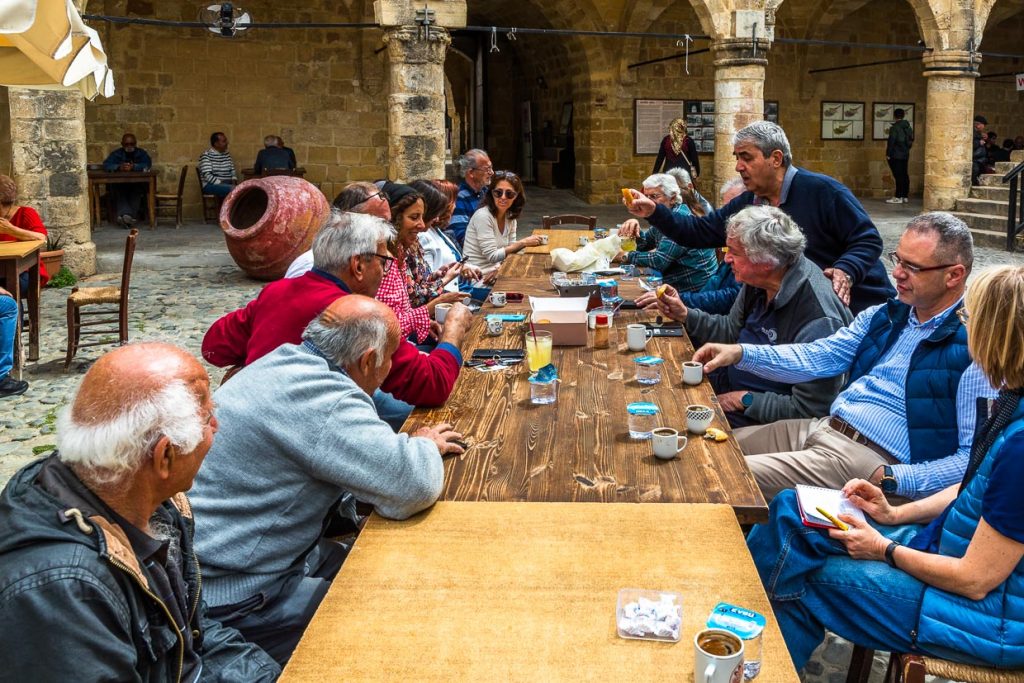
They drink coffee against the absurdity of their situation. They put humor and tolerance against prejudice and propaganda. They laugh and joke, make jokes about each other’s language and yet are interested in learning a new Greek or Turkish word. They shake their heads at how a coffee could become political and that the same drink in Cyprus is now called Turkish Coffee, Greek Coffee or Cyprus Coffee. Sometimes they self-deprecatingly call themselves the Traitors’ Club because they are friends and seek reunification. Their meetings are seen by many of their compatriots, especially in the Greek Cypriot south, as collaboration with the former enemy.
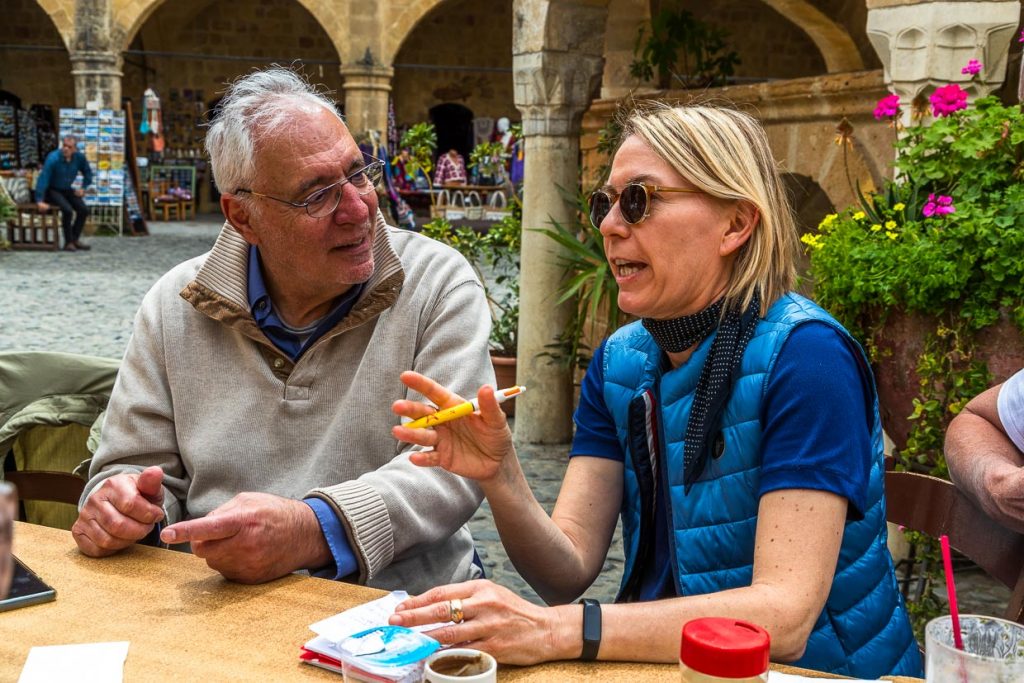
They are not giving up hope, even though Nikolaos, a Greek Cypriot, tears up when he thinks of the missed opportunities and the stubborn resentment of his compatriots. They have been drinking coffee against the conflict on their divided island since 2003. Marina Christofides sums up her motivation for meeting weekly at Büyük Han: “Because we have nothing better to do and because it’s the best we can do.”
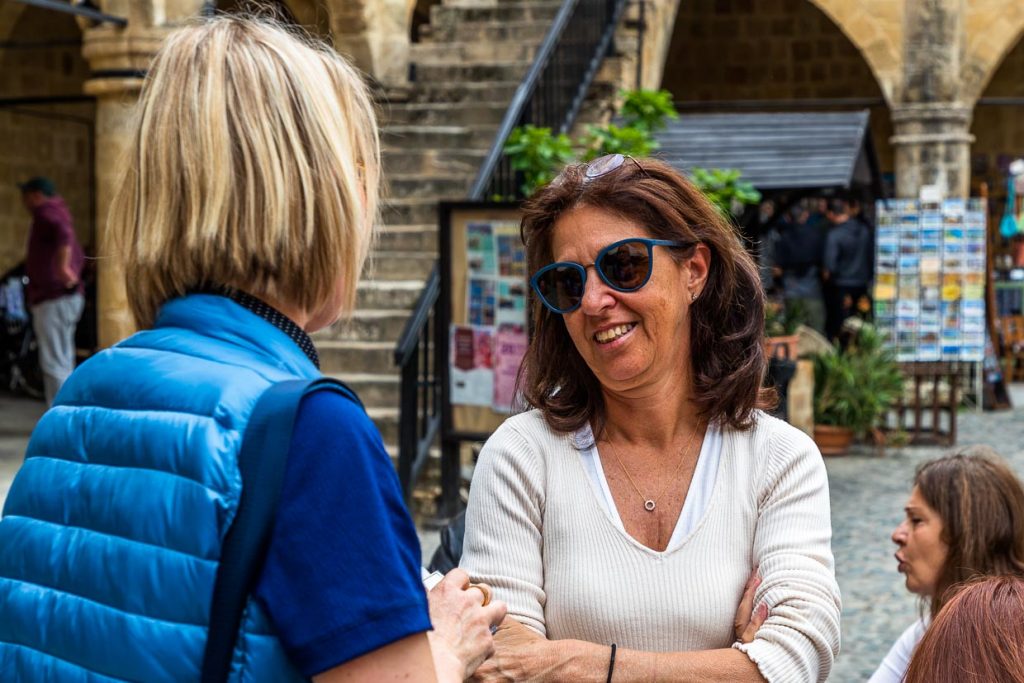
Book tip The Traitors’ Club
Marina Christofides describes life on an island that had the potential to be paradise. In The Traitors’ Club (*), she tells how it feels to live in Cyprus while the unsolved political problem shapes her own life. The conversations with her friends from the titular Traitors’ Club run through the book like proof that the efforts of ordinary people point the way to peaceful coexistence.
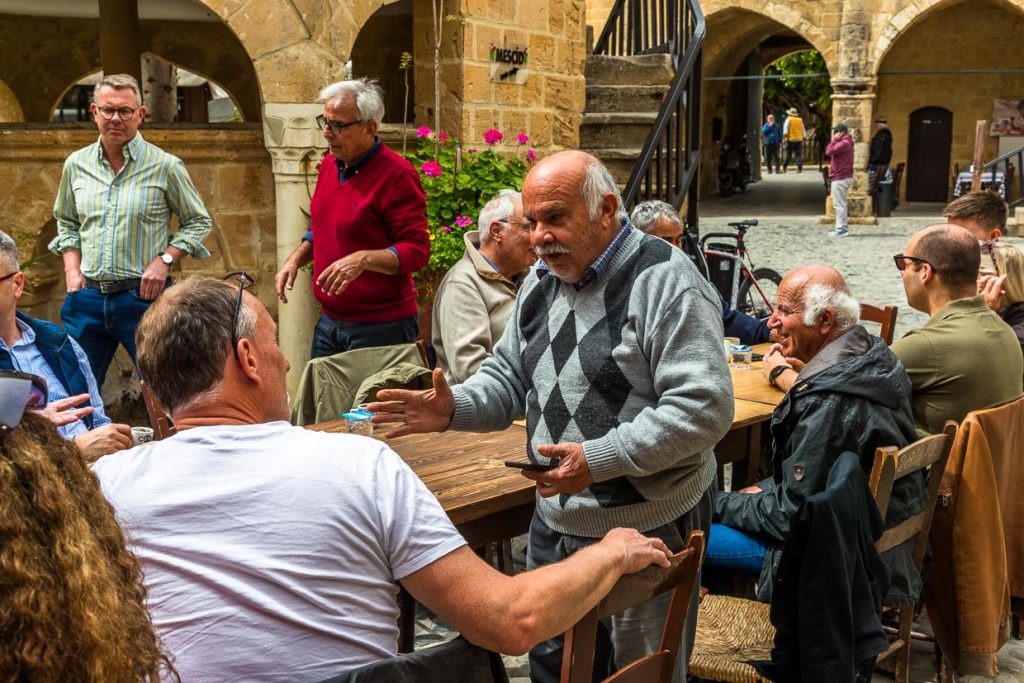
Hiking for reunification
A good four years ago, Andreas Paralikis founded the Peace Nature Lovers. A hiking club that started with a handful of friends, like the Büyük Han Coffee Club once was. In the meantime, the joint hikes on both sides of the island have become increasingly popular. Recently, Andreas tells us, there were 55 participants, including the UN political affairs officer in Cyprus, Solveig Knudsen.
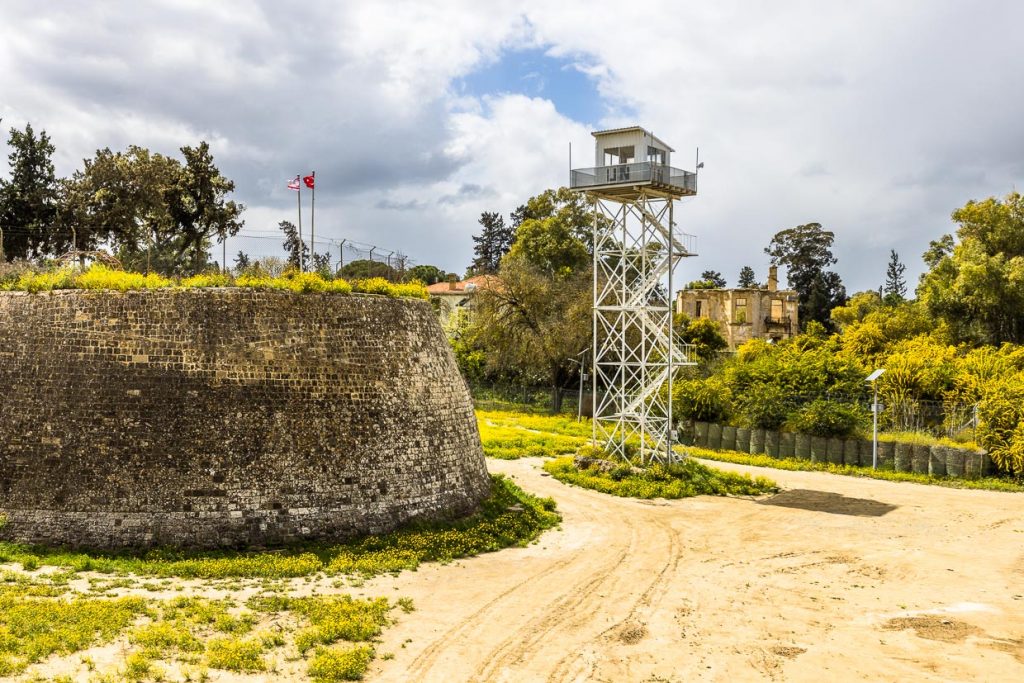
The island everyone wanted
If you think that only the recent history of Cyprus is complicated and complex, you are mistaken. The island in the eastern Mediterranean has always aroused desires, especially among imperialists and converts to the faith. Here is an excerpt from the Who’s Who of Cyprus’ settlement history: The Phoenicians were there, followed by the Greeks and the Assyrians. Then came the Persians and even Alexander the Great once cast an eye on Cyprus. Around the year one of our era, the Romans annexed Cyprus. It was followed by the Byzantine Empire. The year is 1192 A.D. and Richard the Lionheart, still dazzling today, lands on Cyprus to rush to the aid of his shipwrecked sister and his bride. He seems to have thought of nothing better than to conquer the island with his crusaders and marry the rescued bride there. Later he sold the island and after some turmoil French noble families held sway and provided a series of kings from the Luisignan family. Then came the Venetians, followed by the Ottomans. The latter built the Great Caravanserai in 1572, where the Coffee Club meets today. A barter between the Ottomans and the British in 1878 ushered in British rule. Cyprus is a hotbed of cultural history, and countless archaeological sites, castle ruins, monasteries and buildings bear witness to this eventful history. Marina Christofides has also written a book about this. The Island Everyone wanted (*) is an illustrated history of Cyprus.
The research trip was supported by Cyprustravel.

